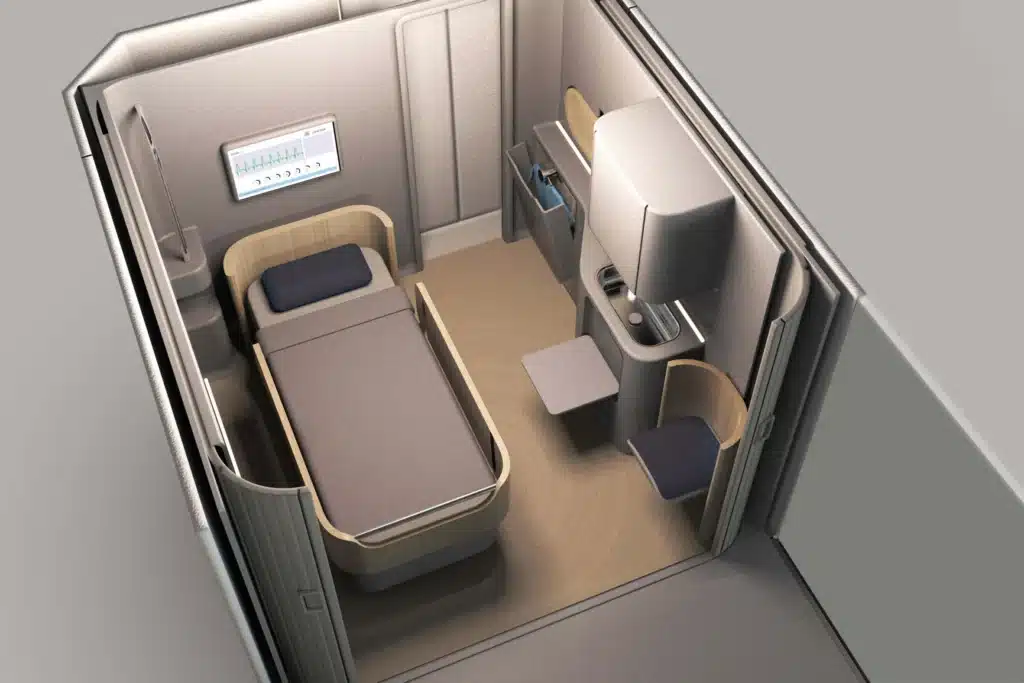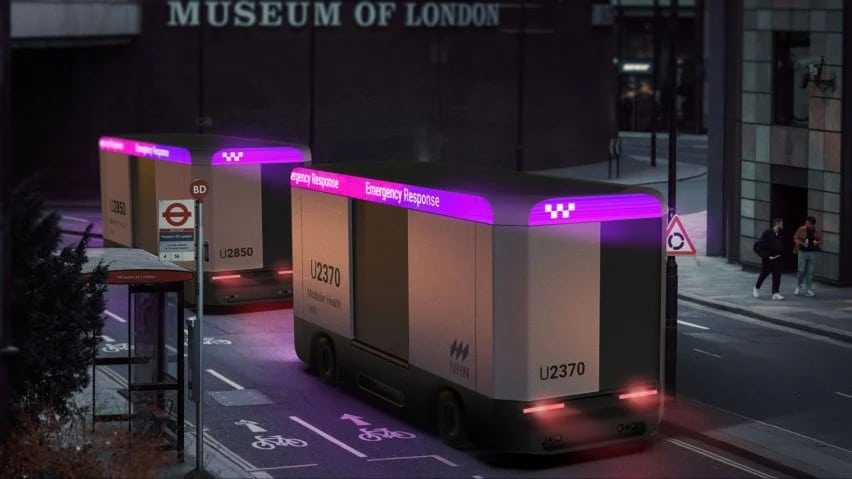The Future Mobility Competition, if you read these pages you will know, is a competition that rewards the best "visions" of tomorrow's mobility. In two other posts I showed you one super bus stop which acts as a hub for ride sharing, and an ultra-modern tram which connects the German rural areas and the cities, recovering old abandoned railway sections. And now?
Now there is a designer concept Mike George: if tratta of a mobile hospital consisting of autonomous and modular emergency vehicles that can be combined with each other.

A modular and autonomous hospital on wheels
Calling National Health Network Modular Hospital System (for friends, or rather enemies there is the unpronounceable acronym NHNMHS) George's proposal presents a network of modular autonomous vehicles that can be combined into small clinics, or large hospital complexes depending on the emergency.
Each module has its own mobile platform that can be customized with specific components (an operating room, an intensive care, a specialized department) to meet different medical needs. It goes without saying that each cabin is designed to facilitate accessibility, safety and comfort for doctors, passengers and patients.



Creative and relevant solution
The concept was designed to reduce the pressure on health services that sometimes face congestion, long waiting times and bed shortages in cities, while providing faster access to rural or remote areas.
The vehicles are designed to prioritize emergency and disaster relief when other facilities or hospital resources are unavailable. When not necessary for emergencies, however, each hospital vehicle can also offer essential services to the community. I am thinking of maternity wards, or small pediatric clinics that move with agility, meeting communities that perhaps do not live near a "permanent" hospital.
A well-conceived and well-executed project, which takes its cue from recent global emergencies to rethink future transport in a functional key, using autonomous vehicles as moving homes.

Why will a “Modular Hospital System” make sense in the future?
Health systems in many countries are currently facing the challenge of meeting the exponentially growing demand for their services. One problem (a big one) for both ambulances and hospital staff is the smooth planning and deployment of emergency vehicles. Every modern hospital seems to be plagued by overcrowding and this means wasting precious time searching for available beds.
It is the crisis of the "one size fits all" healthcare model. A fixed building, with fixed beds, which must cope with any type of unexpected event, wherever it occurs (even at medium-large distances).
Geographic variables such as the physical size of a catchment area, the number of inhabitants, the average age, how rural or urban an area is, and the spread or density of people all show the limitations of this approach. More populated urban areas often face extremely high demand, while rural areas often lack certain specialist services.

A hospital that goes to the patient
One of this study's key insights into the future of healthcare is that a hospital lasts less and less time before becoming obsolete. For this reason, regardless of autonomous vehicles, a drastic rethink will be needed to allow these structures to become more agile and resilient to change.
Going back to the future, these modules on wheels would be able to travel separately, compose and break down as needed. In the event of an epidemic they would be assembled into modules with characteristics compatible with an infectious disease, while in theaters of natural disasters they would have more rooms related to traumatology or surgery.
And so on. Very advanced, very interesting.


